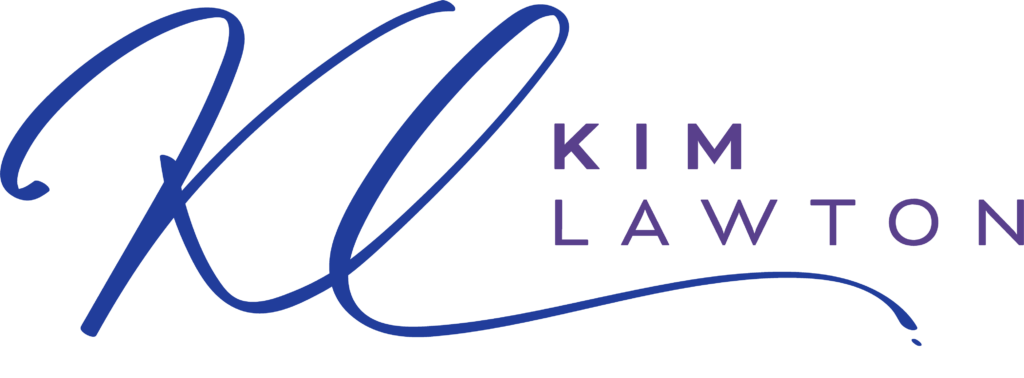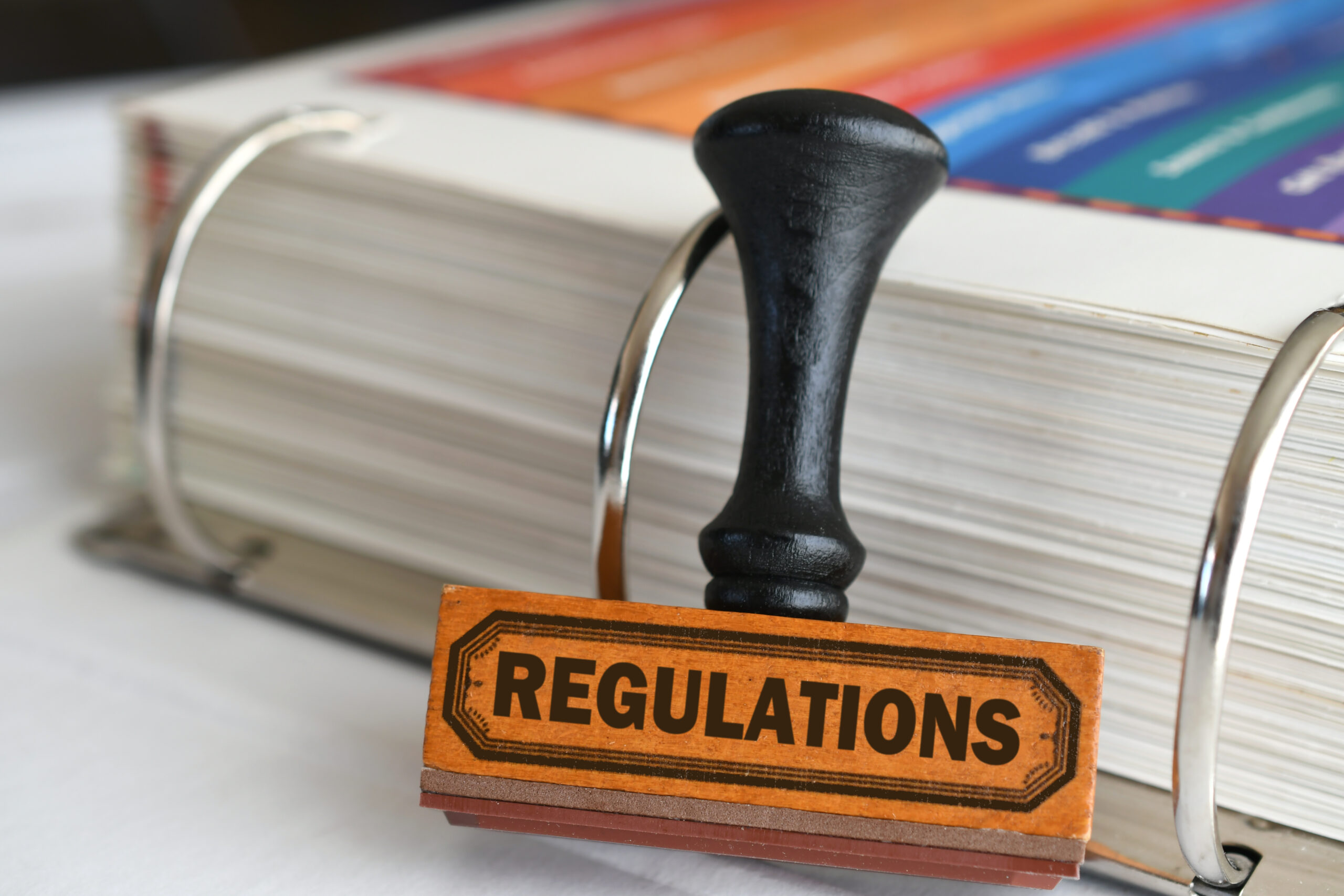Highly regulated industries must follow strict rules, often set by government bodies. Marketing teams in highly regulated industries face several challenges as there are rules in place governing what is and isn’t allowed. It can be difficult and takes extra work to reach audiences in highly regulated industries, but it’s not impossible. Read on to learn how you can develop a successful marketing strategy in a highly regulated industry.
A highly regulated industry is any type of business or industry that is controlled by government rules and regulations. Healthcare, pharmaceuticals, alcohol, tobacco, finance and motor vehicle manufacturing are all highly regulated industries.
Marketing teams in a highly regulated industry face several challenges when advertising and trying to reach their target audiences in personal, effective ways, due largely in part to the guidelines they’re required to follow as a highly regulated industry. For example, when marketing alcohol and tobacco products, platforms like Google and Facebook have strict policies in place prohibiting alcohol and tobacco promotion, creating several obstacles for companies looking to reach people.
However, despite these challenges, there are still ways for marketers in a highly regulated industry to reach consumers. With an understanding of the regulatory landscape, your marketing operations can start developing effective marketing strategies that reach your intended audience while still adhering to regulations.
Table of Contents
Understanding the Regulatory Landscape
#1. Federal Trade Commission (FTC)
#2. Federal Communications Commission (FCC)
Conducting Thorough Market Research
Crafting a Compliance-Focused Marketing Strategy
#1. Understand the Regulations and Restrictions
#2. Align Marketing Messaging with Legal and Ethical Boundaries
#3. Create a Compliance Review Process
Building Relationships with Regulatory Authorities
Leveraging Digital Marketing Channels
Cultivating Strategic Partnerships
Monitoring and Adapting to Regulatory Changes
#1. Stay Up-to-Date with Changes
#2. Regularly Review and Adjust Strategies
#3. Build Flexibility into Marketing Plans
Case Studies and Success Stories
Understanding the Regulatory Landscape
Businesses operating in a highly regulated industry have to maintain regulatory compliance, which is the adherence to the laws, guidelines and specifications relevant to a business in any highly regulated industry. Violating or failing to follow regulatory compliance requirements can result in consequences like legal punishment, federal fines and a significant hit to your company’s reputation.
Regulations are generally enacted to protect someone — like the general public or your employees — or something — like the integrity of commerce and business processes. Regulatory compliance can be present across virtually all industries, as well as within the workplace. Some examples of specific regulations and compliance requirements across highly regulated industries include:
- California Consumer Privacy Act of 2018 (CCPA)
- Fair Labor Standards Act (FLSA)
- Americans with Disabilities Act
- Health Insurance Portability and Accountability Act (HIPAA)
- Federal Information Security Management Act (FISMA)
- Fair Credit Reporting Act of 1970
There are several state, local and federal agencies that administer and enforce laws and regulations that impact industries, like the Securities and Exchange Commission (SEC). In the marketing industry specifically, there are a few acts and regulatory bodies that impact marketing practices, two of the key players include:
- Federal Trade Commission (FTC)
- Federal Communications Commission (FCC)
#1. Federal Trade Commission (FTC)
The FTC prohibits unfair and deceptive marketing and advertisements in any medium, ensuring marketing and advertising content is truthful and doesn’t mislead customers. The FTC also enforces regulations regarding advertising to children through the Children’s Online Privacy Protection Act and provides information on regulations and rule compliance on telemarketing, “Made in USA” claims, health claims, environmental marketing and endorsements and influencers.
#2. Federal Communications Commission (FCC)
The FCC regulates communications via radio, TV, wire, satellite and cable. This is the agency that will handle complaints about broadcast advertising including the products being advertised, the timing of ads and any commercials or marketing materials that are believed to be in poor taste. The FCC also administers rules on political programming, junk fax advertising and protects consumers through measures like the Telephone Consumer Protection Act which issues the Do-Not-Call list.
Conducting Thorough Market Research
One of the first items that should be on your to-do list if you want to develop working strategies to market in a highly regulated industry is to conduct thorough market research, and you can start by gaining an understanding of your target audience and their needs within the regulatory framework of the industry.
Any good marketing campaign starts by first getting to know your target audience. Your marketing operations needs a solid understanding of who your customers are and what they want and need to reach them, especially if you’re advertising a product like alcohol or tobacco. For example, if you’re marketing alcoholic beverages and don’t know your audience before launching campaigns, you could face large fines or penalties for your content accidentally reaching the wrong people — like children.
Armed with useful knowledge about your audience, you should start identifying market gaps and opportunities for differentiation. What can your company offer that others can’t? What is currently missing in the market and how can your company fill that gap? This is where marketing technology, automation and other innovative strategies can come in handy.
You should also analyze competitors’ marketing approaches to see how you can set yourself apart. You can review what they’re doing that is and isn’t working and tailor your marketing strategies to perform better. You should also monitor how your competitors are navigating regulatory compliance. Seeing how other companies are innovating to market effectively while maintaining compliance could help inspire your team to develop new strategies and in some cases may even display the strategies that don’t work and should be avoided.
Crafting a Compliance-Focused Marketing Strategy
With all the rules in place, it may seem difficult to create a compliance-focused marketing strategy in a highly regulated industry. However, it’s not impossible and you can start by taking these first few steps:
- Understand the Regulations and Restrictions
- Align Marketing Messaging with Legal and Ethical Boundaries
- Create a Compliance Review Process
#1. Understand the Regulations and Restrictions
To be successful, marketers in a highly regulated industry must know the rules and restrictions inside and out. If you start developing marketing strategies without a deep understanding of the regulations in the industry, you could not only be setting your campaigns up for failure but could also face legal and financial repercussions.
The information to review is often long and complex and in a lot of cases it may seem best to task a member of the legal team with reviewing and understanding the regulations, but in reality, it’s most efficient if everyone on the team has a first-hand understanding of the restrictions.
#2. Align Marketing Messaging with Legal and Ethical Boundaries
With an understanding of the regulations and restrictions, you should ensure your marketing messaging aligns with the legal and ethical boundaries within the industry. Look at the tobacco industry as an example. Previously, it was unregulated and there were countless ads of cigarette companies showing doctors using their products, conveying the message that if doctors smoke it must not be that bad for your health.
This was eventually proven wrong and with the regulation of the tobacco industry, these advertisements are deemed misleading and deceptive and are prohibited, so if you’re marketing in the tobacco industry today, you’d need to be well-versed in the language that is acceptable in such ads.
#3. Create a Compliance Review Process
To prevent any slip-ups when marketing in a highly regulated industry, it’s important to create a compliance review process, allowing the right people time to review your campaigns. You should review the guidelines for the platforms you’re on — like Facebook, Google and Instagram — to ensure you’re not violating any of their rules. It’s also important to check in with FTC and FCC guidelines, your legal department and any other agency with a stake in your business practices.
Building Relationships with Regulatory Authorities
When marketing in a highly regulated industry, it can be valuable and helpful to your efforts to build relationships with regulatory authorities. Establishing open lines of communication with regulatory agencies can allow you to seek guidance and clarifications on your proposed marketing campaigns.
For example, agencies like the FTC and FCC have landing pages for marketing and advertising full of information on maintaining regulatory compliance, as well as what’s allowed and what isn’t.
You can also network with other marketing professionals within your industry to gain insights and guidance and talk shop about marketing strategies in your industry. You can attend industry events and network in person or get up-to-date on online industry forums to stay informed about best practices and emerging trends in your industry.
Leveraging Digital Marketing Channels
While it can be hard to develop effective marketing strategies when faced with restrictions, it’s still possible for marketers in regulated industries to take advantage of widely used marketing channels, like digital platforms.
However, it’s important to be aware of the digital marketing channels you’re pursuing because oftentimes, popular social media channels like Facebook and sites like Google have their own rules for marketing on their platforms. Restrictions vary among platforms, which is why your brand must keep pace with what the most popular platforms are doing regarding regulations.
When pursuing digital marketing in a highly regulated industry, content marketing can be a powerful tool as it can be used to educate and inform your audience. For example, in the finance industry, you can’t directly tell customers what they should and shouldn’t invest in, but you can offer recommendations on investment practices. Not only is this building up your company’s credibility in the industry, but it allows you to engage with your audience in a meaningful way that is within the regulatory boundaries.
Keep in mind that restrictions on social media platforms also extend to influencer partnerships and sponsorships. Relying on influencers in a highly regulated industry can be tricky, but because influencers are such a major pillar in social media marketing, you should still leverage these partnerships. The best practice here is to choose the right influencer to represent your business while maintaining regulatory compliance. This means not partnering with an influencer with a following that is primarily people under the age of 21 to push alcoholic products.
Cultivating Strategic Partnerships
Cultivating strategic partnerships and establishing a collaborative environment within the industry is a great way to help facilitate better marketing strategies. From collaborating with other businesses marketing in your industry to organizations and platforms that assist with marketing — like content monitoring technology and workflow management software — there are numerous ways to cultivate partnerships and then leverage them to expand your reach while ensuring your efforts are compliant.
If it serves your business, you can also establish joint or co-marketing relationships with a business partner. These relationships can be very beneficial to both parties as it allows you to reach more customers, as well as brainstorm and innovate together to navigate regulatory challenges.
Monitoring and Adapting to Regulatory Changes
Marketing in a highly regulated industry can be a complex task, especially as rules and regulations can evolve. It’s important to monitor and adapt to regulatory changes as they emerge. These general practices can help you stay on top of things:
- Stay Up-to-Date with Changes
- Regularly Review and Adjust Strategies
- Build Flexibility into Marketing Plans
#1. Stay Up-to-Date with Changes
Regulations are bound to change over time, which is why it’s crucial to stay on top of what’s new and what’s on the horizon. You don’t want to miss an important change or be a late adapter. You can easily keep your pulse on the industry by subscribing to regular email updates from relevant industries or by staying current on reporting from trusted information sources, industry professionals and your peers.
#2. Regularly Review and Adjust Strategies
Once a marketing strategy is approved and launched, it needs to be monitored continuously. As rules and regulations shift, not regularly reviewing campaigns and making appropriate adjustments could be a serious mistake as you risk allowing your strategies to fall out of compliance.
#3. Build Flexibility into Marketing Plans
Marketing — especially online — in a highly regulated industry is already complicated as it is, but if you don’t have some level of flexibility built into your marketing strategies, it can complicate things even further. You may need to adjust a campaign or another aspect of your business like your website, and without flexibility, it’ll be hard to successfully pivot.
Case Studies and Success Stories
Marketing in a highly regulated industry certainly has its challenges, but it can be done. There are several businesses that have found great success marketing in highly regulated industries. Three examples include:
- Smirnoff
- Spring Health
- Dogfish Head
#1. Smirnoff
If you want to see a brand in a highly regulated industry do Instagram right, look no further than to well-known alcoholic beverage company Smirnoff. Smirnoff has managed to develop a creative package for socials that is fun, engaging and full of eye-catching, bold colors. These style choices naturally pull in the audience while still within the realm of compliance.
Not only does Smirnoff have a cohesive feed that is fun to look at, but they’ve also included educational content to engage their consumers. Most of their posts include recipes using their products, engaging their consumers by encouraging them to make it at home.
Smirnoff has also managed to tap in to virtually every digital marketing strategy, on top of their standard content. They’ve done celebrity and influencer partnerships, collaborations with other businesses and brands and even event sponsorships. Through being so involved and ever-present, Smirnoff has become an instantly recognizable brand with a massive reach.
#2. Spring Health
Spring Health is a healthcare startup that helps employers provide mental healthcare services to their employees. Founded in 2016, Spring Health has seen rapid growth, which faces them with the challenge of efficiently scaling up while still delivering to their customers.
Where Spring Health’s marketing really thrives is on the company’s website. Spring Health has a unique, well-executed content marketing strategy that focuses on educating their website visitors through resources like their blog, case studies and whitepapers.
Through marketing efforts like this, Spring Health saw a dramatic increase in organic traffic to its website over two years. This type of content marketing strategy works because it’s providing consumers — or potential customers — with informative content that still adheres to regulatory guidelines and boosts Spring Health’s credibility and trust by sharing industry insights and demonstrating expertise to its audience.
#3. Dogfish Head
Dogfish Head is a Delaware-based brewery that has seen great growth in the craft beer industry since its start in 1995. The company’s approach to marketing and positioning itself is unique, as it focuses on humanizing the brand.
Despite the alcohol industry being so heavily regulated and social media platforms having their own rules, Dogfish Head has managed to find a way to share content and engage with its customers in a meaningful way. Especially on Twitter, the brewery shares fun, engaging content, asking the audience questions, and even replying to individual comments. This strategy helps Dogfish Head succeed in its efforts to humanize the brand and show that at its core, it’s run by a group of real people.
Also on Twitter, Dogfish Head encouraged its followers to join them for a Q&A session with the brand’s founder and president. This makes engaging with Dogfish Head feel very personal and intimate, which is hard to achieve in a highly regulated industry.
Conclusion
Highly regulated industries are controlled by government rules and regulations. Due to the regulations facing these industries, marketing can be especially tough, as there are obstacles between your business and meaningful engagement with your audience.
However, despite these challenges, there are still ways for marketers in a highly regulated industry to efficiently reach consumers. Conducting market research, gaining a deep understanding of your industry’s rules and regulations, building relationships and strategic partnerships and leveraging digital platforms can help you create a compliance-focused marketing strategy relevant to your industry.
Embracing compliance within your industry could also be seen as a competitive advantage. If your business is adhering to marketing regulations, but your competitors aren’t, they could face repercussions that could put them out of business.
If you’re marketing in a highly regulated industry, it’s extremely important to maintain regulatory compliance, otherwise, you could face fines, legal punishments, scandals and reputation damage that could be hard to repair.





